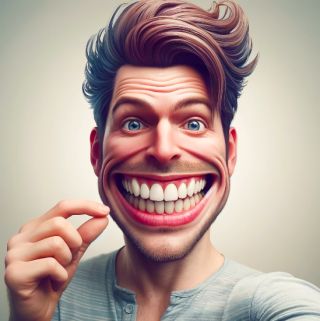Artificial Intelligence
The AI Self: Creativity, Identity, and the Future of You
Are you creating a selfie, or is the selfie creating you?
Posted April 13, 2024 Reviewed by Ray Parker
Key points
- AI-generated selfies redefine self-perception, enabling the exploration of varied identities.
- They blur the lines between real and virtual selves, influencing self-image and social perceptions.
- AI challenges concepts of authenticity, urging a balance between an AI-generated and human identity.

Do you have an artificial intelligence (AI)-generated selfie? Chances are that you do. And in this context, we are witnessing a curious shift in the way we perceive ourselves and the world around us. AI is no longer merely a tool that we use; it is increasingly becoming an active participant in our creative processes, writing for us, drawing for us, and even thinking for us. As AI continues to integrate into our lives, it is not only changing the way we create but also the way we define our very identities.
Let's take a closer look at AI-generated selfies. These hyperrealistic images, created by advanced AI algorithms, offer us a glimpse into a world where our self-representation is no longer limited by the constraints of physical reality. With AI, we can visualize ourselves in dramatically different styles, roles, and contexts—from cyberpunk to elegant black-and-white, from princess to cyborg. And remember, these synthetic images are specifically generated to be pleasing to the human eye.
But these AI-generated selfies are more than just a technological novelty or a playful form of digital dress-up. They represent a bit of a shift in the way we understand and express our identities. In a sense, they serve as a Rorschach test for who we might want to be, allowing us to explore alternate versions of ourselves and tap into latent desires and aspirations.
This raises fascinating philosophical questions about the relationship between our virtual and real selves. As our digital personas become increasingly sophisticated and realistic, the line between the virtual and the real begins to blur. While an AI-generated selfie may not literally come to life, it can certainly impact our real self-image and behavior, shaping how we see ourselves and how others perceive us—from a private text message to your LinkedIn page.
But perhaps the most profound question raised by AI-generated selfies is what they mean for the future of human identity in an age of artificial intelligence. As AI plays an ever greater role in shaping our creative and personal realities, we will need to grapple with deep existential issues of authenticity, agency, and what it means to be human. Will we maintain a core sense of self, or will our identities become more fluid and malleable, constantly reimagined by the creative power of AI? Will we see AI as a tool that empowers our self-expression, or will we feel increasingly defined by the AI?
What is clear is that we are standing at the threshold of a creative new world in which the boundaries between human and artificial intelligence are becoming increasingly blurred. The key, perhaps, is to find a way to harness the power of AI for personal and creative growth while also preserving a stable sense of self and human agency. We must embrace the creative possibilities offered by AI while also remaining grounded in our fundamental humanity.
In the end, the rise of AI-generated selfies is not just about a new form of digital art or self-expression. It is a reflection of a deeper shift in our relationship with technology and a harbinger of a future where artificial intelligence is increasingly woven into the fabric of our lives and identities. As we move forward, let us do so with open minds, creative spirits, and a deep commitment to understanding and shaping the impact of AI on our shared human experience.


